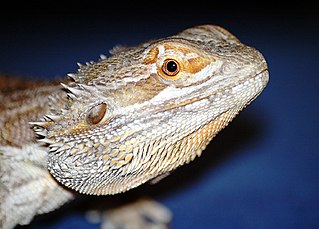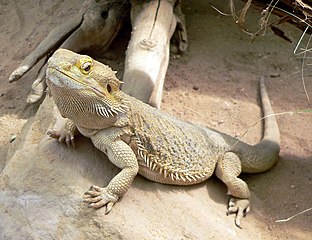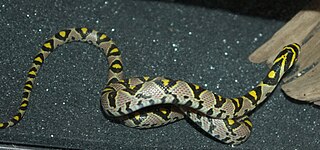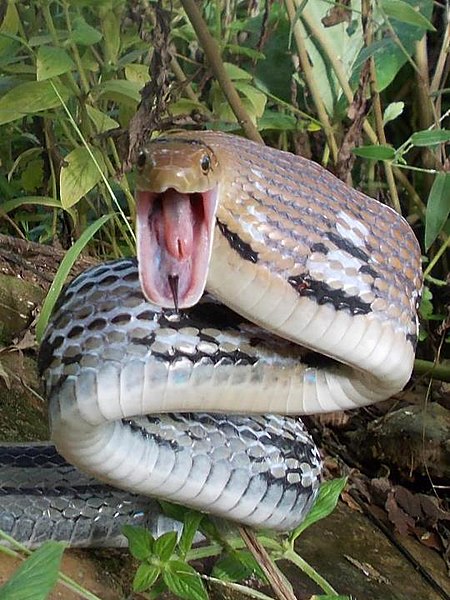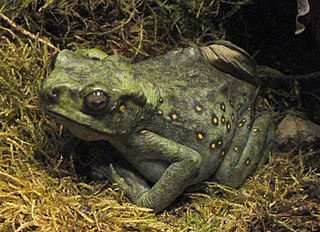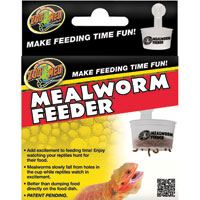Leopard Geckos and Bearded Dragons have stellar reputations among lizard enthusiasts. In fact, they come as close to being perfect pets as any reptile can. However, there are major differences in their habits, activity levels and care needs, and it’s important to be aware of these when choosing a pet. When an animal is active, how much its care will cost, the space it needs and other factors will affect your pet-keeping experience and your new lizard’s quality of life. In the following article I’ll compare Leopard Geckos and Bearded Dragons in all relevant areas. Detailed care information is provided in the articles linked under “Further Reading”; as always, please also post any questions or observations you may have.
Reptile Handling
Most lizards are best considered as “hands-off” pets, but both Leopard Geckos and Bearded Dragons break this rule. Although individual personalities vary, both adapt well to gentle handling, and are not stressed by human contact.
Activity Levels
Neither is overly active, but both have fascinating behaviors that are well-worth watching for. Bearded Dragons are out and about by day, at which time they bask (their most common “activity”!), feed, and display to tank-mates.
Leopard Geckos, being nocturnal, are ideal for owners who are “night owls”. They will become active in a dimly lit room, or you can equip the terrarium with a black or red reptile night bulb (lizards do not sense the light produced by these bulbs). Leopard Geckos sometimes emerge during the day as well, especially if food is offered.
Life Span
A Leopard Gecko in the St. Louis Zoo’s collection lived for a record 28.6 years. The published longevity for a Bearded Dragon is 15 years, but there are unofficial reports of individuals approaching age 20.
Lizard Reproduction
Both species breed reliably, and a wide variety of color morphs are available. Please see the articles linked below for detailed information.
Cost
Bearded Dragons require larger terrariums and higher temperatures than do Leopard Geckos, and must be provided with a source of UVB radiation (Leopard Geckos and other nocturnal lizards get along fine without UVB bulbs). Therefore, Leopard Geckos are the less-expensive pet, in terms of supplies and electricity use.
Terrarium Size (single adult)
Leopard Gecko: 10-20 gallon (larger is preferable)
Bearded Dragon: 30 gallon
Temperature
Leopard Gecko: 72-85 F, with a basking site of 88 F
Bearded Dragon: 75-88 F, with a basking site of 95-110 F
Lizard Diet
Leopard Geckos are carnivorous. Young Bearded Dragons feed largely upon insects, adding plants to the diet as they mature.
Both require highly varied diets comprised of vitamin/mineral supplemented roaches, silkworms, crickets and other invertebrates. Bearded Dragons also need various greens and, perhaps, a high quality commercial food. Mealworms and crickets alone, even if sprinkled with supplements, are not an adequate diet for either lizard. Please see the articles linked below for more information on diet.
Health Concerns (Pet and Pet Owner)
Intestinal impactions that result from the ingestion of sand and gravel are perhaps the most commonly-encountered health concern (both species). This can be avoided by the use of cage liners, or by feeding your lizards in large bowls, via tongs, or in a separate, bare-bottomed enclosure. Young lizards, being clumsy hunters, are more likely to swallow substrate than are adults.
Diseases related to poor nutrition are common among lizards maintained on crickets and mealworms alone, and in Bearded Dragons that do not receive adequate UVB exposure (Vitamin D3 is manufactured in the skin, in the presence of UVB). Both species sometimes refuse food in the winter, even if kept warm (please see this article for further information).
If a moist shelter is not available, Leopard Geckos sometimes retain the eyelid lining after shedding. Please see this article.
Atadenovirus infections are becoming increasingly common among Bearded Dragons. Unfortunately, the resulting “Wasting Disease” or “Star Gazing” is incurable. Please see this article for further information.
Salmonella bacteria, commonly present in reptile and amphibian digestive tracts, can cause severe illnesses in people. Handling an animal will not cause an infection, as the bacteria must be ingested. Salmonella infections are easy to avoid via the use of proper hygiene. Please speak with your family doctor concerning details, and feel free to post below if you would like links to useful resources.
Further Reading
Complete Guide to Bearded Dragon Care
Complete Guide to Leopard Gecko Care
 That Reptile Blog – Reptile, Amphibian and Exotic Pet Care and Information
That Reptile Blog – Reptile, Amphibian and Exotic Pet Care and Information

